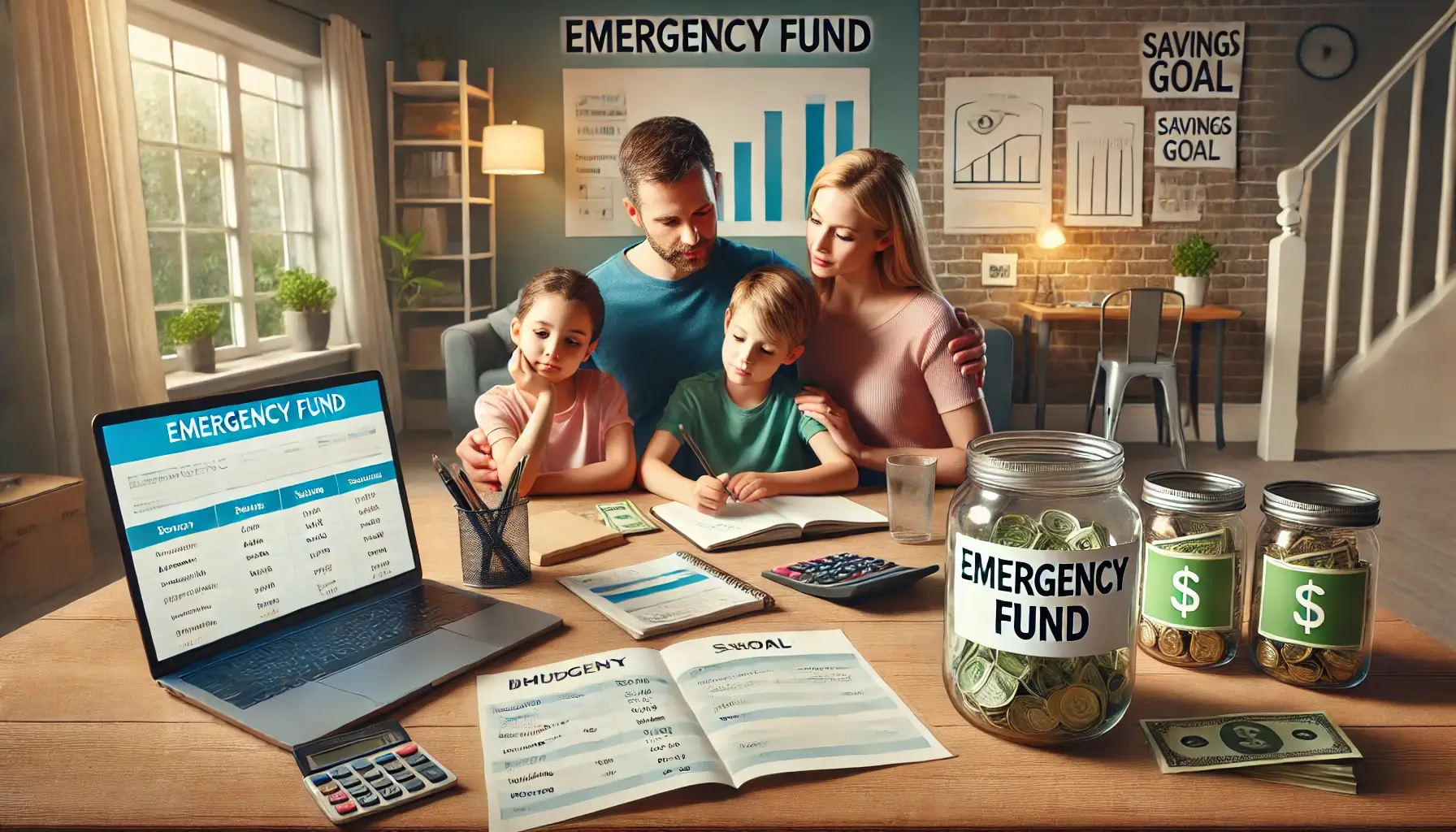Life is full of surprises — and not all of them are good. From unexpected medical bills to car repairs, having a financial cushion can be the difference between calm and chaos. That’s why every family, no matter the income level, needs an emergency fund.
You don’t need to earn a fortune to build one. You just need a clear plan and the right mindset.
Here’s how to start building a strong emergency fund — even if money is tight.
What Is an Emergency Fund?
An emergency fund is money set aside to cover unexpected, urgent expenses such as:
- Medical emergencies
- Job loss or reduced income
- Car or home repairs
- Unplanned travel for family matters
- Major appliance replacement
This fund acts as your financial safety net, giving you peace of mind and protecting you from going into debt when life throws a curveball.
How Much Should You Save?
The ideal amount depends on your family’s situation. Most experts recommend:
- Beginner goal: $500 to $1,000
- Long-term goal: 3 to 6 months of essential expenses
If you’re on a tight budget, start with a smaller milestone — like $100 — and build from there.
Step 1: Track Your Essential Monthly Expenses
Before you can set a goal, you need to know how much you spend on necessities like:
- Rent or mortgage
- Utilities
- Groceries
- Insurance
- Transportation
- Childcare (if applicable)
Add these up to understand how much you’d need per month if an emergency hit. This helps you define a realistic savings target.
Step 2: Start Small and Stay Consistent
Don’t wait until you can “afford to save.” Start with whatever you can — even $5 or $10 per week makes a difference.
Tips:
- Automate small weekly transfers to your savings account
- Save any extra income (side gigs, tax refunds, cash gifts)
- Use a piggy bank or jar for spare change and small bills
- Celebrate every milestone: $50, $100, $250, and so on
Saving is more about habit than amount.
Step 3: Cut One Small Expense and Redirect It
Choose one non-essential expense you can reduce or eliminate, and transfer that money directly to your emergency fund.
Examples:
- Cancel a subscription you rarely use ($10–$20/month)
- Reduce takeout meals by one per week
- Brew coffee at home instead of buying it
- Pack lunch instead of eating out
You won’t miss it as much as you think — and your future self will thank you.
Step 4: Open a Separate, Easy-to-Access Savings Account
Keep your emergency fund separate from your daily checking account to avoid spending it by accident.
Look for:
- A savings account with no fees
- A little interest (even if it’s small)
- Quick access in case of emergencies
- Optional: nickname it “Family Emergency Fund” for clarity
Keeping it separate adds a layer of psychological protection.
Step 5: Use Windfalls and Extra Income
Whenever your family receives unexpected money, set aside a portion (or all) for emergencies.
Sources to consider:
- Tax refunds
- Work bonuses
- Side hustle income
- Birthday or holiday cash gifts
- Rebates or cashback earnings
These can fast-track your emergency fund without touching your regular income.
Step 6: Turn Savings into a Game or Challenge
Involving your whole family — especially kids — can make saving fun and more successful.
Fun saving challenges:
- The 52-week challenge (start with $1, add $1 more each week)
- No-spend weekends with money saved going to the emergency fund
- “Round up” challenge: save the change from every purchase
Use a visual tracker — like a savings thermometer on the fridge — to show your progress and stay motivated.
Step 7: Revisit and Adjust Your Goal Every Few Months
As your family grows or your income changes, your emergency fund goal might shift.
Reassess every 3–6 months:
- Did your expenses increase?
- Could you save more now?
- Did you have to dip into your fund?
Adjust your goal and strategy accordingly, and always aim to replenish what you use.
Step 8: Don’t Use It Unless It’s Truly an Emergency
This fund is not for vacations, gadgets, or shopping sprees. It’s your lifeline — use it only for real emergencies.
Good reasons to use the fund:
- Car breaks down and you need it to get to work
- Emergency medical bill not covered by insurance
- Sudden job loss and you need to cover rent and food
If you’re unsure, ask yourself: Is this urgent, unexpected, and necessary?
Why It’s Worth the Effort
Building an emergency fund may take time, especially if you’re starting with very little. But the sense of security and stability it brings is priceless.
You’ll worry less, sleep better, and be more prepared for whatever life throws your way — without falling into debt or panic.
Final Thoughts: Protect Your Peace
An emergency fund isn’t just money — it’s peace of mind. It’s knowing that your family can face challenges without everything falling apart.
No matter how tight your budget is, you can start today. And once you get going, you’ll be amazed at how far small, consistent efforts can take you.
Your future self — and your family — will be so grateful you did.

